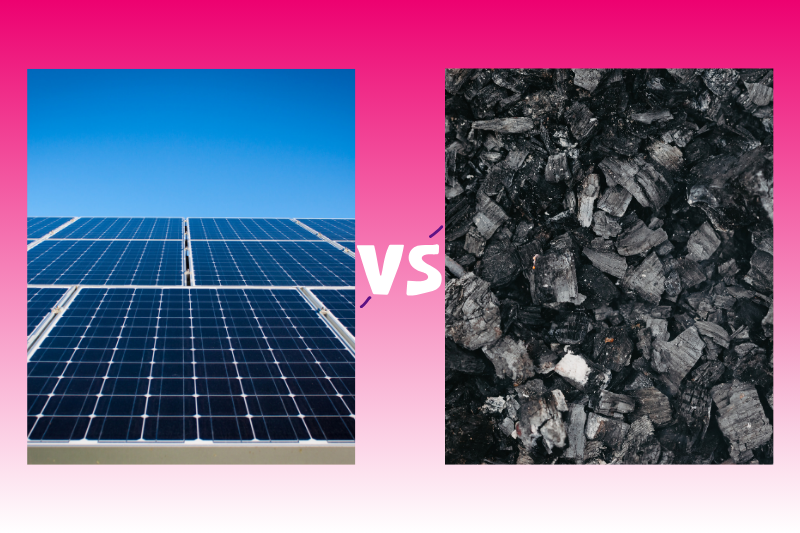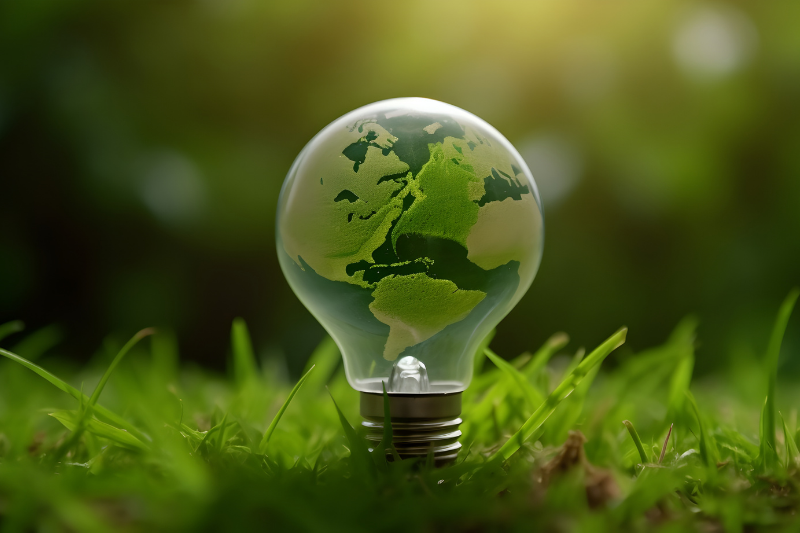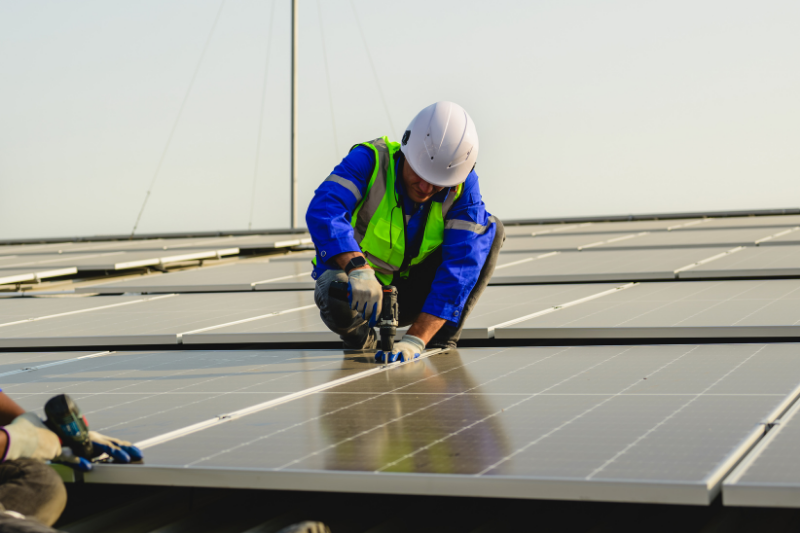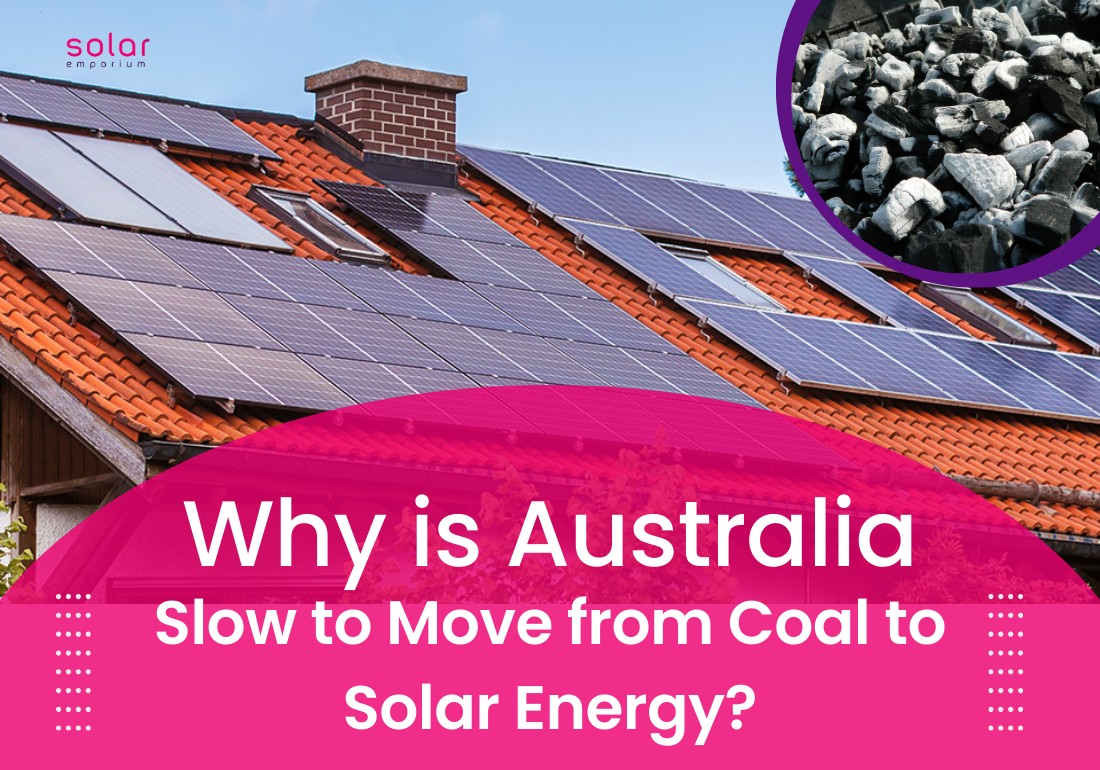Over the past few years, the global energy sector has undergone significant changes, focusing on a sustainable and energy-efficient future.
The changes emphasize maximizing the use of renewables while reducing dependency on fossil fuels and environmental pollution.
Despite having vast sun-drenched landscapes, the highest solar potential, and all the suitable conditions needed for energy transition, Australia has been relatively slower than the others in this green energy revolution.
But why is Australia slow to move from coal to solar energy? What are the underlying barriers?
This blog will guide you through the multifaceted reasons behind this delay and suggest effective ways to accelerate the shift toward solar energy.
So, tag along to know more!
Navigating Australia’s Energy Landscape: The Critical Role of Coal
Did you know Australia is one of the world’s largest exporters and consumers of coal?
Yes, you heard it right! For decades Australia’s energy mix has been heavily reliant on coal, which has played a pivotal role in its economy and energy infrastructure.
The country’s vast coal reserves, combined with established mining and export capabilities, have made coal a significant contributor to Australia’s energy landscape.
According to recent data, around 65% of the country’s energy is still derived from burning fossil fuels like coal, natural gas, and crude oil. Meanwhile, coal, in particular, contributes 46% of the total energy mix.
The heavy dependency on fossil fuels has shaped the nation’s energy landscape, creating opportunities and challenges in shifting toward renewable energy systems, like solar energy.
Is Renewable Energy Transition Important in Australia? | Why does it Matter?
Yes, the transition to renewable energy has become a crucial and growing concern for Australians, as the world has been facing extreme weather events in recent years.
Excessive burning of coal increases carbon emissions, which deplete the ozone layer, pollute the air, and generate toxic substances that can cause several health issues.
Additionally, the polar ice caps are melting due to global warming, rising sea levels, and increasing the frequency of coastal flooding and cyclones.
That’s not the end; the drastic impact of climate change is also resulting in record-breaking rain, extreme heat waves, bushfires, and other natural disasters across many Australian states.
These highlighted significant issues related to climate change and its impact on Australia are pressing challenges that require urgent action.
And that’s where energy transition comes into play. Wondering how?
Australia is rich in renewable resources, like solar energy. So, investing in these technologies and transitioning to clean energy sources is much easier in Australia. Anyone can harness solar power more effectively here than in many other countries.
However, shifting from traditional coal-burning power plants to solar can be a great start toward sustainability.
For example, homeowners can install solar panels on rooftops or anywhere where sun exposure is high throughout the day. This can generate significant amount of energy to power home appliances during grid failure.
This energy shifting not only helps reduce carbon emissions but also promotes energy independence and contributes to economic resilience. It could be a crucial part of addressing environmental challenges.
So, now it’s clear why renewable energy transition is essential and how deeply it matters for Australian residents.

Can Solar Energy Fully Replace Coal?
With the growing use of renewables for clean energy generation, people often wonder if solar energy could replace coal.
Similarly, due to abundant natural resources, another question emerges: Is Australia’s 100% renewable energy transition Possible?
Well, the answer might sound perplexing as it can be both yes and no. Let’s clarify how!
Solar energy has the potential to significantly reduce reliance on coal, but whether it can fully replace it depends on various other factors.
For instance, even though Australia is blessed with abundant natural sunlight, many parts of its states, such as the southern part, lack proper sun exposure and transmission infrastructure to harness solar energy efficiently.
Another pressing issue is the intermittency of solar energy. Due to the sun’s unavailability, solar panels cannot generate electricity 24/7.
That’s why you need additional battery storage or a reliable backup system to store enough power for low solar production periods, such as during cloudy days or long winter nights.
Battery storage can be costly and may not be available to the masses. Also, they cannot store the huge amount of energy needed for a large-scale countrywide transition.
So, in terms of cost, capacity, and scalability, solar batteries still face several challenges.
However, several government incentives, rebates, tax credits, and subsidies have recently made solar energy accessible to the broader Australian population. This has made solar a more economical option, particularly for low-income people and rural areas.
These government policies and investments in renewables, such as solar energy infrastructure, are crucial in accelerating the transition from coal to solar energy.
So, even if the complete replacement of coal is not feasible immediately, recent advancements in solar panel technology certainly point to a promising future in which solar energy can significantly reduce our reliance on coal.
Factors that Slow Down the Transition from Coal to Solar Energy in Australia

Have you ever considered the issues that delay moving from coal to solar energy in Australia?
Numerous factors, from political, economic, and social aspects to policy inconsistency and technological challenges, can slow down the movement from coal to solar energy.
The shift from traditional, fossil fuel-based energy systems to more sustainable, renewable energy sources is not easy. It requires careful planning and proper execution.
So, here are the barriers that need to be addressed to enjoy the benefits of a robust solar energy sector:
Economic Factors
- Energy Transitioning Cost
Even though installing solar panels is an economical option to reduce electric costs and carbon emissions, integrating them with battery storage can be costly.
Also, Australia’s coal industry has had a well-established foothold for the past few decades. These industries provide attractive jobs and generate revenue, fostering the country’s economic growth.
So, transitioning from coal to solar energy can be seen as a financial threat to local communities that depend on coal mining for their livelihoods.
- Understanding the Market Dynamics
The Australian energy market, where coal remains the dominant energy source, is influenced by several complex factors. These include state and federal government policies, market competition, and the role of coal companies.
Australia is the largest coal exporter, and mining this non-renewable energy source helps drive the country’s economy.
Most coal operators have considerable support and influence from the political government, which results in more coal usage. People usually find coal much more reliable than solar and other renewable sources for electricity generation.
Infrastructure Investment and Technology Barriers
While moving from coal to solar energy, people often encounter financial hurdles for infrastructure development.
Large wind and solar farms are usually built-in suburban areas; they require long transmission lines to facilitate renewable energy projects across the country.
Another uncertainty factor is the delays in renovating or building a new setup. The current infrastructure is predominantly designed for coal and gas plants, so investing in smart grid upgrades and enhanced battery storage systems can be costly and complex.
This limitation in infrastructure building, grid connectivity, and storage systems can inhibit businesses and consumers from switching to solar.
Social Factors
Public perception, educational campaigns, and social awareness about the reliability and effectiveness of solar energy can increase the solar adoption rate. However, any misconception or lack of knowledge is enough to hinder the transition process.
Regional disparities in energy availability can also be a pivotal factor. Some underprivileged areas, like remote and rural regions, may lack access to the infrastructure needed for solar energy.
On the flip side, urban centers may have more options for solar installation, leading to uneven adoption rates across the country.
Political Challenges and Policy Inconsistency
Many Australian homeowners often face political instability and policy inconsistency while embracing solar energy for a sustainable lifestyle.
This frequent change in energy policy, multiple stakeholder issues, and short-term planning discourages investors and consumers from investing in solar energy.
Additionally, powerful lobbying of the fossil fuel industry in some states and governments prioritizes coal over solar energy.
For example, while some states are making significant strides toward renewable energy and encouraging the installation of solar panels, the majority continue to support coal despite being the sunniest and windiest continents on Earth.
So, ultimately this results in a mixed regulation policy that complicates and stifles the entire sustainable energy transition process.
Speeding Up Sustainable Energy Projects: A Roadmap for Success

A multifaceted approach is required to accelerate the shift from coal to solar energy. This includes reforming long-term government policy, investing in infrastructure, and developing cost-effective, energy-efficient battery storage systems.
One such initiative could be introducing carbon taxation. This policy approach aims to reduce greenhouse gas emissions by charging a tax on the carbon content of fossil fuels.
The idea is to make carbon-intensive activities, like burning coal, oil, and natural gas, more expensive, thus incentivizing businesses, consumers, and industries to shift toward cleaner, more sustainable energy sources.
Besides these, researching, educating people about the benefits of renewable sources, running social campaigns, and encouraging them to participate more in new ventures like community solar projects can scale down the use of coal or other fossil fuels.
The Australian government can also support startups and entrepreneurs in the clean energy sector, which can lead to groundbreaking solutions.
It helps Australians reach their renewable energy target, where 82 percent of their electricity will be generated through renewables by 2030.
These initiatives can enhance the viability of solar energy, drive down costs, and reduce pollution, thus improving efficiency in electricity generation.
For more information about solar energy, keep an eye on Solar Emporium. You can also talk with an expert for any of your solar needs.







